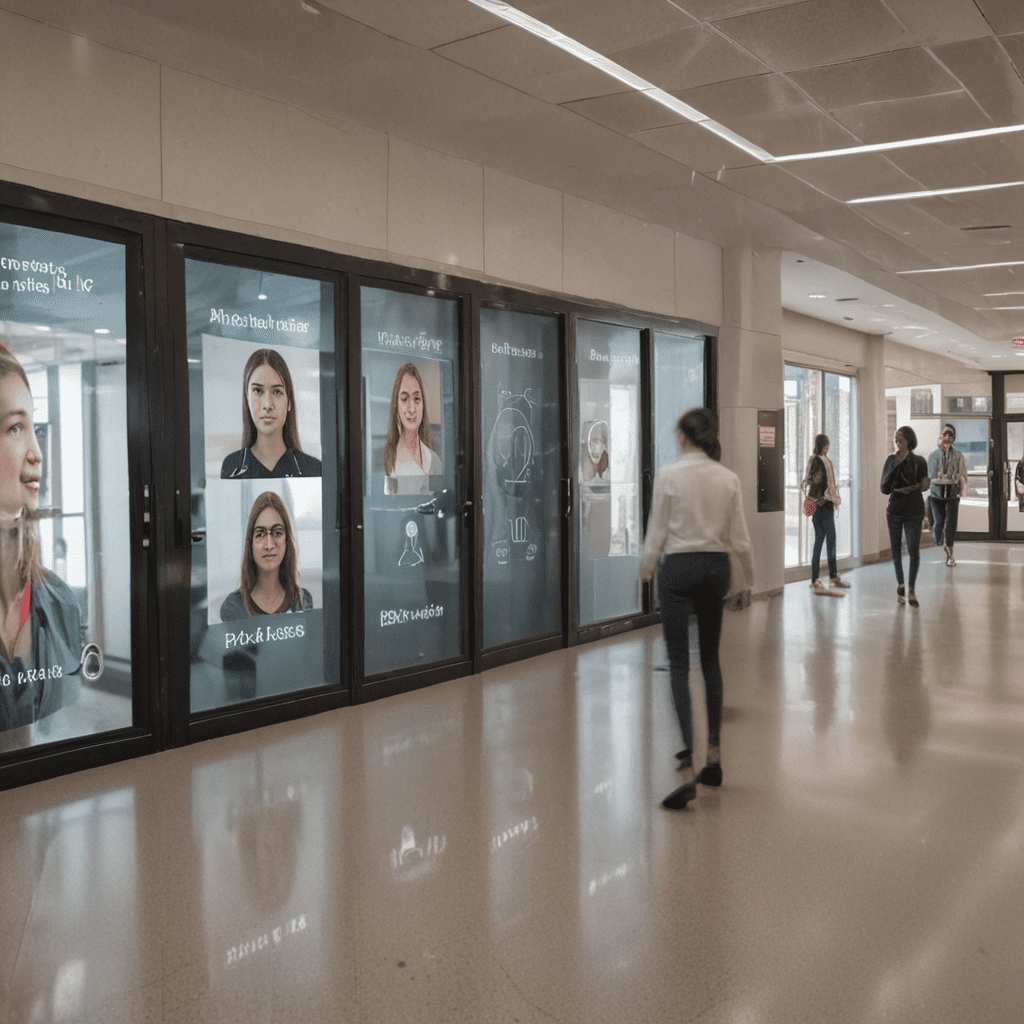
1. Introduction: The Role of Facial Recognition in Campus Access Control
Facial recognition technology has emerged as a transformative solution for enhancing campus access control in educational institutions. By leveraging advanced algorithms and biometric data, facial recognition systems offer a secure, convenient, and efficient way to manage student and staff access to buildings, facilities, and events.
2. Benefits of Facial Recognition for Education Institutions
Implementing facial recognition in education offers numerous benefits, including:
- Enhanced Security: Facial recognition provides an additional layer of security by verifying individuals' identities based on their unique biometric data. This helps prevent unauthorized access and impersonation, ensuring the safety of students, staff, and visitors.
- Improved Convenience: Facial recognition eliminates the need for physical keys or cards, allowing for seamless and touchless access. This simplifies the entry process, reduces wait times, and offers a more user-friendly experience.
- Increased Efficiency: Facial recognition automates the access control process, reducing administrative overhead and manual verification tasks. This frees up campus security personnel to focus on other critical security measures.
- Personalized Experiences: Facial recognition can be integrated with other campus systems to provide personalized access permissions and tailored experiences for students and staff. For example, it can automatically unlock doors for authorized individuals or grant access to specific areas based on their roles or permissions.
- Data Analytics for Security Optimization: Facial recognition systems can collect valuable data on access patterns and security incidents. This data can be analyzed to identify security vulnerabilities, optimize access control policies, and improve overall campus safety.
By harnessing these benefits, educational institutions can create a more secure, convenient, and efficient campus environment for their students, staff, and visitors.
6. Privacy and Ethical Considerations
Facial recognition technology raises important privacy and ethical concerns that must be carefully addressed in educational settings. Institutions must implement clear policies and guidelines regarding data collection, storage, and usage. Informed consent must be obtained from individuals before capturing their facial data. Additionally, data protection measures should be in place to prevent unauthorized access or misuse of personal information.
7. Integration with Other Security Measures
Facial recognition can be effectively integrated with other security measures to enhance campus safety. Access control systems can combine facial recognition with additional security measures such as two-factor authentication, biometrics, or ID cards. This layered approach strengthens security and reduces the risk of unauthorized access.
8. Future Trends in Facial Recognition Education
The future of facial recognition in education is promising, with ongoing advancements in technology. Innovations in deep learning, artificial intelligence (AI), and edge computing will enhance facial recognition accuracy and efficiency. Future systems will enable real-time facial recognition for rapid access and continuous monitoring.
9. Best Practices for Facial Recognition in Education
To effectively implement facial recognition in education, institutions should adhere to the following best practices:
- Transparency and Communication: Provide clear information and transparency to the campus community regarding facial recognition technology and data management practices.
- Informed Consent and Privacy Protection: Obtain informed consent from individuals before collecting and storing facial data. Implement robust data security measures to protect privacy.
- Access Control Integration: Integrate facial recognition with existing access control systems to enhance security.
- AI-Powered Analytics: Leverage AI-powered analytics to optimize access policies and improve security based on facial recognition data.
10. Conclusion: Empowering Education with Enhanced Security and Convenience
Facial recognition technology offers transformative benefits for campus access control in education. By enhancing security, improving convenience, and streamlining processes, it empowers institutions to create a safer and more efficient learning environment for students, staff, and visitors. Thoughtful implementation and adherence to best practices will ensure that facial recognition technology contributes to a positive and secure educational experience.
FAQs
Q: Is facial recognition mandatory in education institutions?
A: No, facial recognition is not mandatory, and institutions have the discretion to implement it based on their security needs and privacy considerations.
Q: How secure is facial recognition technology?
A: Facial recognition technology is generally secure, with advanced algorithms providing high accuracy in identity verification. However, like any security measure, it is not foolproof and should be combined with other security measures to strengthen protection.
Q: Can facial recognition data be misused?
A: Facial recognition data can potentially be misused if not properly managed. Institutions must implement robust data protection measures and adhere to best practices for collecting, storing, and using facial data.


